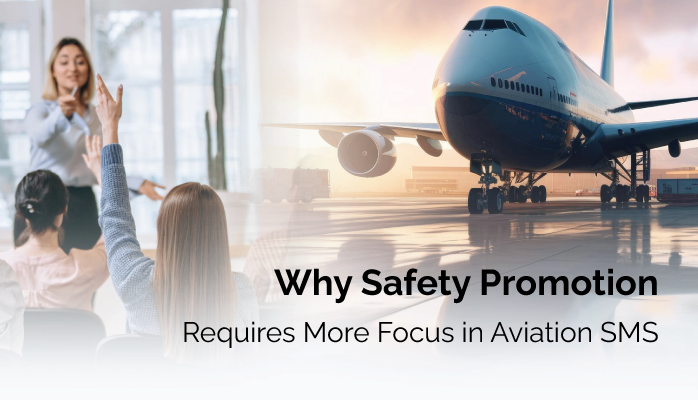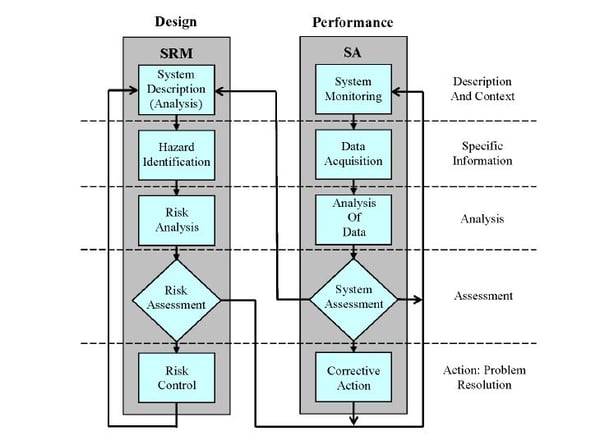Adequate Safety Promotion Is Scarce in Most Aviation SMS

Like safety training, safety promotion in aviation safety management systems (SMS) is wrought with rigid material that screams in so many ways, “tune me out!”
Much of the safety promotion information doled out at workplaces looks more like an IKEA how-to manual than serving as a tool to make employees cheer for, and feel as if they are true contributors to their aviation SMS.
Safety promotion is among the most important elements in every aviation SMS implementation. Any organization that fails to routinely and effectively promote their aviation SMS is leaving money on the table. Safety promotion is an investment in your aviation SMS!
From our experience talking with safety managers around the world, promoting aviation safety is the most overlooked and neglected component of ICAO's four pillars of an SMS, which are:
- Safety Policy;
- Risk Management;
- Safety Assurance; and
- Safety Promotion.
Related Articles on Four Pillars in Aviation SMS
- What Are the 4 Pillars of SMS?
- 4 Pillars | What Is Safety Risk Management
- History of Aviation SMS and Four Pillars - With Free Tools
As mentioned earlier, safety promotion could be argued as the most important component of aviation SMS. The argument gains strength when one considers that safety promotion drives a safety culture. Safety culture ensures healthy safety assurance activities coming from the organization's safety reporting system.
Safety assurance feeds the safety risk management component. Under safety risk management (SRM), the system is reviewed and safety risk analyses are performed. When the risk is not acceptable or is only acceptable with mitigation, then risk controls either need to be:
- redesigned; or
- added to mitigate risk.
From the image below, we see under the "Performance" side, system monitoring is performed by employees, contractors, vendors, and customers. These "actors" are continuously interacting with and monitoring the system. Data acquisition comes from safety reports and audit findings. Without reliable data acquisition activity, management cannot be assured the system is operating as designed.

Therefore, safety promotion is a highly important SMS component that routinely becomes ignored. The main reason safety promotion is easy to ignore is because safety managers either don't know about the Heinrich principle or they forget about it. The same applies to Department Heads. When managers realize the importance of getting employees to report every minor incident and close call, they renew their faith in safety promotion activities.
Heinrich stated that for every major accident, there are 600 minor incidents and close calls that lead up to the major accident. This does not mean that you get 600 chances to practice your risk management processes before you experience "The Accident." The major accident could be the first, fifth, twentieth, or 350th event. What Heinrich meant is that you have one chance in 600 to have a major accident.

This image should be posted in every safety manager's office to remind him of the importance of reporting minor incidents and close calls.
It is a shame that we have to keep reminding managers. Safety promotion is very important!
When employees and management turn deaf ears to aviation safety promotion, it is almost always for the following reasons:
Related Aviation SMS Safety Promotion Articles
- 4 Pillars | What Is Safety Promotion Component (the "Overlooked" Pillar)
- Best Ways to Promote Safety in Your Organization (With Free Resources)
- Why Transparency Promotes Safety Culture in Aviation SMS
Reasons Employees Are Bored of Your Aviation SMS
- Lack of creativity
- Scant personality
- Nothing to draw attention – i.e. a “hook”
- Formal and stiff
Moreover, creating lackluster safety promotional tools and content is a waste of time and money.
The basic fact is that great safety promotion happens in small doses that grab people’s attention. Here are four ways to effectively – and easily – get employees to cheer for your aviation SMS.
Keep It Informal
Much in the same way that the best salesman never lets on that they are “selling,” informal ways of promotion are especially effective because employees usually don’t realize that anything is being promoted.
Informal methods invite employees to participate in some form through:
- Interpersonal interaction
- Reading safety information
- Humor
Long story short, it’s easier to engage and be more consistent with informal tools because it reduces the pressure of having to openly pursue employees. What do informal methods of promotion look like?
Regular, Funny, Anecdotal Safety Pictures

This could simply be a morning email or message on the safety Message Board that displays a funny picture example of how not to practice safety, with an anecdote that promotes a particular safety practice.
The internet is ripe with such pictures, which means you have an essentially limitless supply of material.
This is an effective method for several reasons:
- It’s a regular reminder – i.e. consistent – that can become habitual
- It’s short and focuses on a single message
- It’s engaging
- It stimulates interest in safety culture in general
Furthermore, it instills the feeling that aviation SMS isn’t boring, mechanical systems – they exist and function because of human action.
Granted, pictures don’t always have to be funny. A captivating example I saw recently was of a bird strike whereby the bird struck a small plane and literally ripped through a quarter of the wing.
An aviation SMS safety manager could very well use this as a promotional tool by sending it out to employees with a short title, something like, “Bird strikes do matter. If you see them, tell someone about it.” While in this example, bird strike reporting is mandatory, you get the idea.
This kind of captivation and interest is very effective promotionally because it works on people without their realizing it.
Related Aviation Safety Promotion Articles
- How to Reduce Resistance to Aviation SMS Programs With Difficult Employees
- 3 Tips to Discover Resistance to Aviation Safety Program - With Checklists
- Checklist to Quantify Resistance to Your Aviation SMS
Make Your Face a Friendly One
I’ve heard several times from safety managers that simply making your face a regular, welcomed addition to people’s day can do wonders for promoting a highly effective safety culture.
Unlike the previous example, this type of aviation safety promotion does not promote any one kind of practice but rather endorses the safety program as a whole.
An aviation safety officer is the face of his/her SMS, and when employees-
- regularly see your face
- enjoy a friendly exchange
- learn something new about you
-it sends the message that the SMS is also active in the work environment. Part of being a friendly face also involves the kind of simple things that go a long way in making an impression on people:
- Remembering employees’ names
- Remembering a detail about them that you can bring up when you talk to them
- Being a good listener
These kinds of things earn employees' respect and make them want to help you by helping the SMS. Friendly respectful attitudes from the safety team are effective in reducing barriers to the SMS. This approach may not work well with especially resistant employees, but you still never want to cause employees to resent the SMS.
Feedback Caters to Pride
People generally care most about the things they have a direct bearing on. When employees feel like they are actively involved in creating aviation safety policies, procedures, and changes, they will take more pride in aviation SMS because they are involved. Helping employees feel involved can be encompassed by a single word.
Feedback.
Feedback means asking employees their opinion. Asking them what they would change. What do they like and dislike? In so many ways, getting feedback caters to one’s sense that their opinion matters. It’s a practice that mutually benefits management and employees, drawing them closer together. Getting feedback can be done:
- Through regular safety surveys
- By having safety meetings
- In regular conversation with employees by simply asking them questions
While regular safety surveys are a formal tool for gathering data, they promote safety informally through training and by providing feedback. In reality, of course, consistently practicing all of the above bullet points is the best way to get valuable feedback.
Related Aviation Safety Survey Articles
- Aviation SMS Surveys - an Often Neglected Safety Promotion Tool
- How to Use Safety Surveys to Improve Safety Culture in Aviation SMS
- 30 Good Questions for Safety Surveys in Aviation SMS [With Free Resources]
Final Thought
The most effective methods of influencing employees tend to be informal because they are subtle, and they work on people surreptitiously. I realize some of these sounds rather devious, but it’s not that you are trying to trick employees, it’s simply about finding creative ways to involve, engage, and present the aviation SMS.
All this is not to say that formal methods of promotion should not be employed, rather than formal methods should be secondary to regular doses of informal safety reminders.
Learn what duties other safety managers do daily, weekly, monthly, etc.
Last updated in June 2024.






